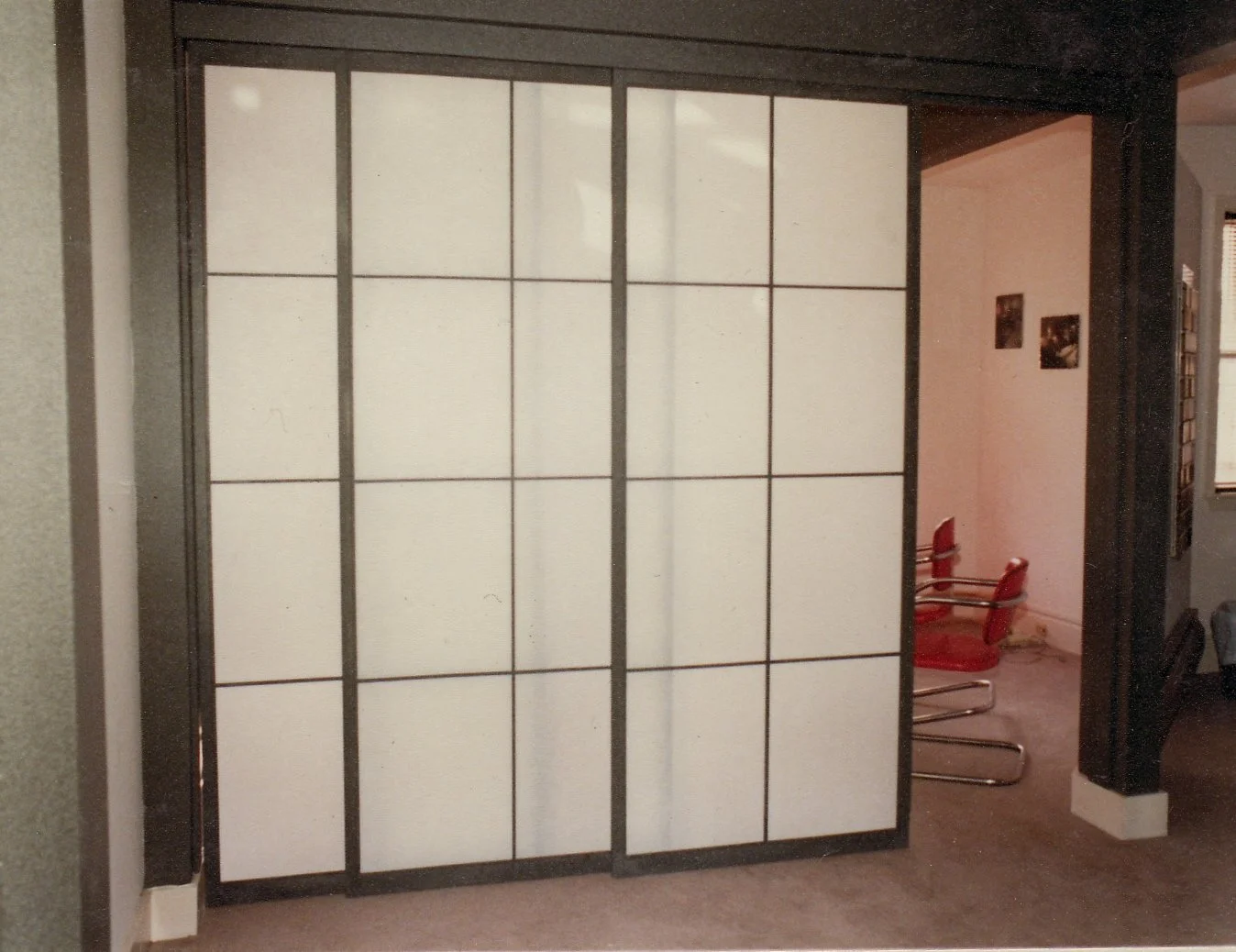Wood – to finish or not to finish?
Some purists would say to put any type of wood finish on a shoji panel is wrong. While we agree a clear finish that enhances the natural beauty of wood is my preference, we have found that often times clients need other options.
Probably the most obvious reason is for color-matching with the room’s interior. We often do an ebonywash finish to mimic ebony inlay in furnishings, or to coordinate with darker pieces in the room that are almost black, but not jet black. We love this finish – it is subtle and understated, just like a shoji screen.
For those rooms requiring a true black finish, satin black lacquer is a popular finish. Black is such a dramatic color and makes the shoji “pop” into the room. If you want your shoji to be a focal point, specify black lacquer.
Clients often would like their shoji to match the color of existing woodwork, flooring or furniture. It is a nice way to create an ensemble look to a room, and allow the shoji to fit in easily with the rest of the decor. One of our more unusual finishes we like to use is our graywash stain; it’s a great complement for hi-tech interiors, and absolutely beautiful alongside stainless steel or chrome accents.
Sometimes practical considerations require us to put a finish on the shoji to protect them from the elements. We will apply a marine finish for shoji doors that will be used in a bathroom, a yacht, or even installed in an outdoor spa surround or tea house.
Contrasting hipboards are another way clients like their shoji customized. In this photo, the hipboards were made of walnut to match the dining room set.
A contrasting walnut hipboard
Or gridwork may be specified a different color from the shoji frame. Subtle details like these can make your shoji shine.
Occasionally, clients need the shoji panel to be a different color on each side. This is most common when the shoji screens are used over a window, and must appear “neutral to the street.” High rises and condominiums often have this requirement. So your shoji screen may be our honey-colored light brown stain on the room side, and white on the window side. The two separate colors are carefully applied, so the change in color is precise and consistent with the clean lines of a shoji.
Dual-color shoji frame
Shoji used between rooms can also get this dual color treatment. These stand out on the shop floor! One project we did years ago required aqua lacquer on one side, with apricot on the other. The inserts were also different on each side of the door – C.O.M. wallpaper to match the wallpaper in each room. Although traditional Japanese joinery techniques were used in the making of these doors, they definitely did not look like traditional Japanese shoji when completed! The client, located in the Midwest, loved her doors. When closed, the bold colors of the adjoining rooms were successfully separated, but beautifully enhanced.
Even though we made those shoji ourselves, it was hard for us to visualize how they would look in the home. But it’s important to us to build doors that please you.
What about unusual finishes — remember when faux finishes were so popular? Yes, we have done unusual ones: glazes, crackled or speckled frames to look like crushed stone, and even a high build automotive finish.
Shoji panels with faux stone finish to match walls
Sometimes clients want a high build glossy finish; others want a natural matte finish that protects the wood but looks like nothing is there.
Whatever we use, it’s our aim to provide you with a quality finish second to none. To that end, we hand sand every piece – even all the gridwork – several times. We apply successive coats of finish to achieve the look requested. We send you custom finish strike-offs so you can approve the finish before the panels are coated. We ease the edges to give the shoji a refined look and feel.
As any woodworker will attest to, finishing is an art. A great finish enhances the beauty of the piece and should accentuate the quality of the woodworking and material used. At Design Shoji, we do not use a finish to cover flawed stock, fill in gapped joints, or smooth over inferior joinery. Regardless of the thickness of the finish, our half-lap joints are planned so the grid joinery fits tightly together when the panel is assembled.
After all is said and done, our preference is still for clear, hand-rubbed finishes that bring out the natural beauty of the wood. We just like how this finish feels; you touch a shoji screen often, and we like the warmth of hand-rubbed finishes.
But don’t be shy if you have something else in mind. Finishing is a critical element of how we work to customize your shoji doors here at Design Shoji.



